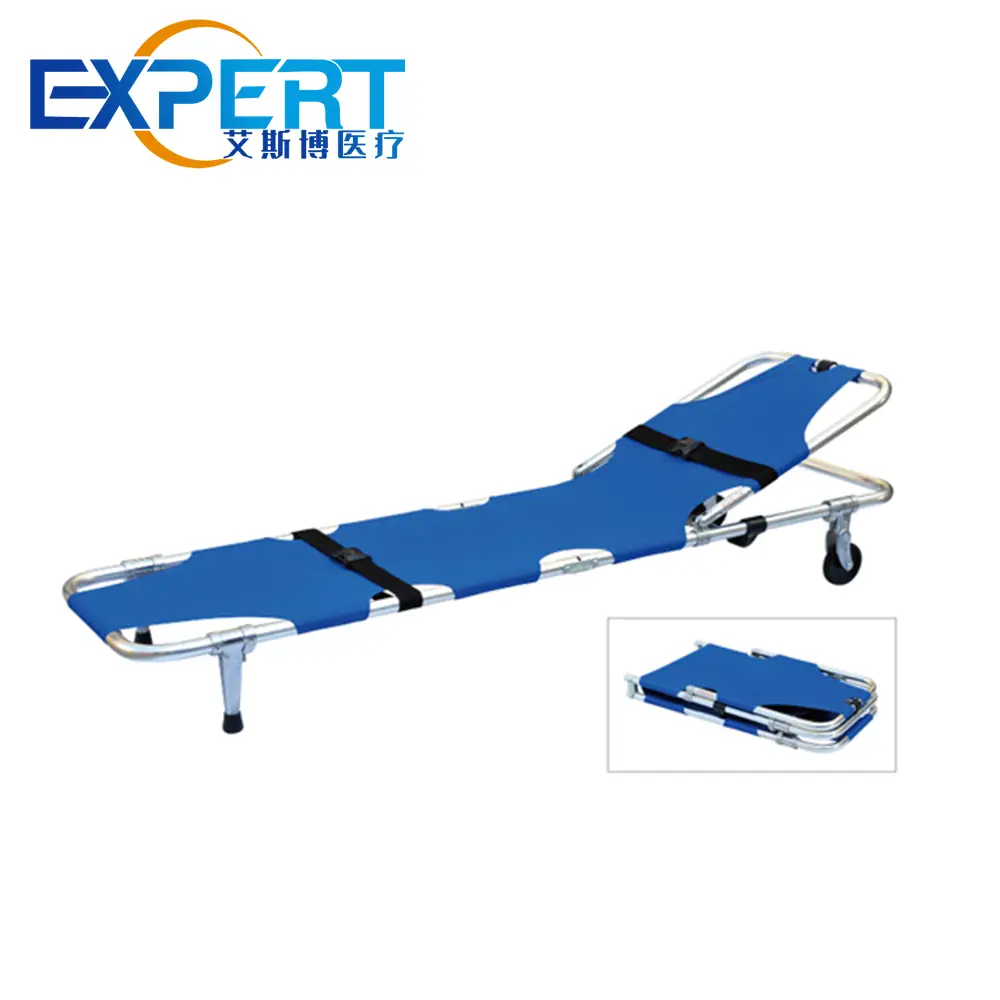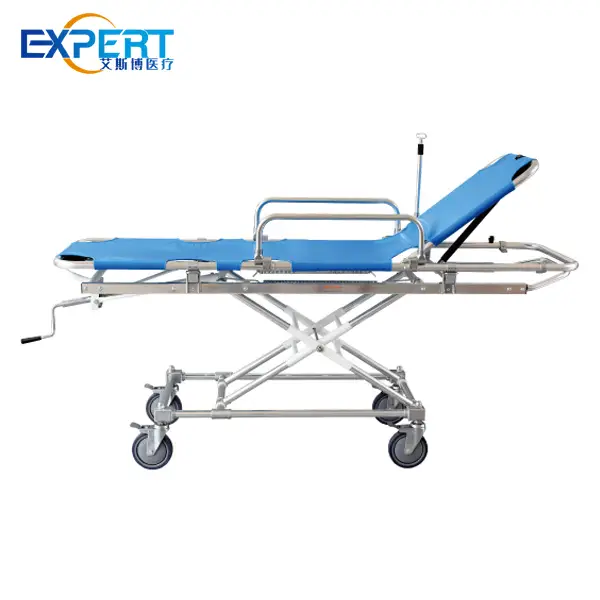Adresse
304, rue Cardinal Nord
Centre Dorchester, MA 02124
Heures de travail
Du lundi au vendredi : 7h - 19h
Week-end : 10h - 17h
Adresse
304, rue Cardinal Nord
Centre Dorchester, MA 02124
Heures de travail
Du lundi au vendredi : 7h - 19h
Week-end : 10h - 17h

In healthcare, every detail can have a significant impact on patient outcomes, so a well-thought-out stretcher trolley design is extremely important.
Bienvenue sur mon blog !
Avant de plonger dans le contenu, j'aimerais que vous me rejoigniez sur mes plateformes de médias sociaux où je partage plus d'informations, interagis avec la communauté et publie des mises à jour. Voici comment vous pouvez me contacter :
Facebook :https://www.facebook.com/profile.php?id=100071234835011
LinkedIn :https://www.linkedin.com/company/74943205/admin/dashboard/
YouTube : www.youtube.com/@shandongexpertmedicalequip4695
TikTok:www.tiktok.com/@expertmedical
Commençons maintenant notre voyage ensemble. J'espère que vous trouverez le contenu ici instructif, engageant et utile.
In the realm of healthcare, where every detail can significantly impact patient outcomes, the importance of well-thought-out stretcher trolley design cannot be overstated. A well-designed stretcher trolley not only enhances patient comfort and safety during transport but also improves the efficiency and effectiveness of healthcare providers. By focusing on key elements such as adjustability, mobility, and material quality, a thoughtfully crafted stretcher trolley design becomes an indispensable tool in delivering high-quality patient care.

One of the primary reasons why stretcher trolley design matters in healthcare is the impact it has on patient comfort and safety. A well-designed stretcher trolley should prioritize the patient’s comfort during transport, whether they are being moved within a hospital or transferred from an ambulance to an emergency room. Key aspects of design that influence comfort include:
By focusing on these design features, healthcare facilities can ensure that patients are transported in a manner that minimizes discomfort and maximizes safety.
Another critical aspect of stretcher trolley design is how it facilitates efficient patient transfers. In emergency situations, time is of the essence, and the design of the stretcher trolley can make a significant difference in how quickly and safely a patient can be moved. Features that contribute to efficient transfers include:
The design of the stretcher trolley plays a vital role in streamlining patient transfers, reducing the time and effort required to move patients from one location to another within the healthcare facility.
The materials used in the construction of stretcher trolleys are a fundamental aspect of their design. The choice of materials affects not only the durability and longevity of the trolley but also its weight, ease of cleaning, and resistance to damage. Common materials used in stretcher trolley design include:
The ability to adjust and customize the stretcher trolley is crucial in accommodating a wide range of patient needs. Features such as adjustable backrests, leg supports, and height settings are essential for creating a versatile trolley that can be tailored to individual patients. Customization options might include:
Mobility is a key factor in stretcher trolley design, as it determines how easily the trolley can be moved within the healthcare facility. At the same time, stability must not be compromised, as it ensures the safety of both the patient and the healthcare providers. Important design elements that influence mobility and stability include:
The following table summarizes key design specifications that should be considered when selecting a stretcher trolley. These specifications will help healthcare facilities choose the right trolley based on their specific needs.
| Caractéristique | La description | Considérations |
|---|---|---|
| Matériel | Stainless steel, aluminum, HDPE | Balance between durability, weight, and cost |
| Ajustabilité | Height, backrest, leg support | Customization for patient comfort and specific needs |
| Mobilité | Swivel casters, wheelbase, braking system | Ease of movement and stability during transport |
| Des dispositifs de sécurité | Side rails, locking mechanisms | Prévient les chutes et assure la sécurité des patients |
| Compatibilité | Integration with other medical equipment | Seamless transfers between different hospital areas |
| Capacité de charge | Maximum weight the trolley can support | Ensure it meets the needs of heavier patients |
| Accessoires | IV poles, oxygen holders, storage compartments | Enhances functionality and adaptability |

Healthcare providers often face physical strain due to the demands of moving patients, especially in emergency situations. Poorly designed stretcher trolleys can exacerbate this strain, leading to injuries and decreased efficiency. Design features that help reduce physical strain include:
The design of the stretcher trolley can also have a significant impact on the overall workflow within a healthcare facility. Efficiently designed trolleys contribute to smoother operations, allowing staff to focus more on patient care rather than dealing with cumbersome equipment. Workflow efficiency is enhanced through:
The design of a stretcher trolley plays a critical role in healthcare, influencing everything from patient comfort and safety to staff efficiency and workflow. By prioritizing key design features such as materials, adjustability, mobility, and safety, healthcare facilities can ensure that their stretcher trolleys meet the high demands of the medical environment. Investing in well-designed trolleys not only enhances patient care but also supports the well-being and productivity of healthcare providers.
The most important feature depends on the specific needs of your healthcare facility. However, patient safety and comfort should always be a top priority, so features like adjustable height, safety rails, and padded surfaces are crucial.
To ensure durability, look for trolleys made from high-quality materials like stainless steel or heavy-duty aluminum. Additionally, check the trolley’s load capacity and whether it comes with a warranty that covers long-term use.
Yes, many manufacturers offer customization options for stretcher trolleys. You can choose from various accessories, adjustability features, and materials to create a trolley that meets your specific needs.
A well-designed stretcher trolley improves patient care by ensuring comfort during transport, reducing the risk of injury, and allowing for quick and efficient patient transfers within the healthcare facility.
A reliable braking system should have easy-to-use foot pedals that securely lock the trolley in place. Some advanced systems also offer central locking mechanisms that control all four wheels simultaneously for added stability.